Panamint City Ghost Town, Death Valley
I find the most challenging aspect of writing about all these places is not referring to ALL of them as my favorite. They have all become my favorite places in their own unique ways. This place however, based upon all categories across the board, wins my overall vote. It holds a very special place in my heart, maybe because I’ve been here several times and with some really great company. It’s challenging, rewarding, beautiful, isolated and rich in a mysterious history. It will test your strength and endurance, especially you are backpacking in. It’s all uphill from here with almost 7 miles of aggressive elevation gain, but the best views come after the hardest climbs.
In order to fully enjoy the Panamint City experience, we must first understand it’s past. It’s like watching a movie when you know it’s based on a true story, it enhances the experience. It all started in 1872, when three stagecoach robbers, eluding authorities, came across silver deposits in Surprise Canyon. Wanting to profit from their silver findings, they had a minor complication, they were still wanted by the law for recently stealing $12,000 from a Wells Fargo Stagecoach. They decided to take a rich sample of their silver ore findings to a local senator with hopes of striking an agreement and relieving themselves of their “wanted” status. They agreed to sell their newly discovered claim to the senator in exchange for their amnesty, provided they return the stolen $12,000. So a deal was struck and mining operations began.
Word quickly spread of the rich silver deposits, hundreds of prospectors flooded the region and the Panamint Mining District was formed February 1873. Business was good. It wasn’t long before the area boasted a population of over 1,500 people and Panamint City began establishing it’s treacherous reputation. Referred to as “the toughest, rawest, most hard-boiled little hell hole that ever passed for a civilized town” Panamint city was a sinister place to call home. Crime was rampant, issues were solved by fists and revolvers. The lawless town had several saloons and it’s own red light district, but no School, Church, Jail or hospital, which were commonplace in most other mining towns during these days. Because of this lawlessness and constant wagon hi-jacking attempts, the silver had to be melted and cast into 400lb cannon balls so the miners couldn’t steal the silver.
It’s clear that this town had it’s fair share of criminal issues and plenty of harsh residents, definitely winning the Mining Town of the year award. Amidst the dysfunction, profitable mining operations continued and many additional mines were opened, including the Wyoming, Hemlock, The Challenge, Hudson River, War Eagle, Marvel, Wonder and the Esperanza. Business was still good, but not for long.
In June of 1876, what was described as a cloud burst, unleashed a torrential rain which flooded and washed away most of the town, killing many of the residents and destroying most of the town. Overnight Panamint City was abandoned, instantly becoming on of the most infamous Ghost Towns in the West. Several later attempts were made to re-engage in the mining operations, but none ever proved to be successful and many chalked the area up to being cursed. Some people even claim they could hear the echo and cries of workers still trapped in the mines and howling screams of the frantic souls trying to escape the flooding town. Okay Okay, I made up that last sentence, but only to prepare you for a later adventure I’ll be sharing that does involve haunted ghost towns, allegedly.
Now that we have the history lesson part covered, here’s how to best explore Panamint City. As I mentioned before, I really like this location because of it’s challenge and difficulty. With difficulty comes the advantage that this area is rarely explored and not many people make this journey. The best time to take on this challenge is when the weather is cooler, located on the South West edge of Death Valley, temperatures can get extremely high during certain parts of the year. There’s a reason why it’s called Death Valley and holds the world record for hottest temperature ever recorded on planet earth, at 134.1 degrees. On a plus note, this one of the only places in Death Valley where running water can be found year round, flowing from a spring about halfway up the trail.
The hike is difficult and can be done one of two ways. First is a day hike, starting out very early you can make the hike, explore a bit and then make it back down before nightfall. Advantage of this would be your ability to pack a light day pack. Disadvantage would be not nearly enough time to explore and really enjoy this area. I would 100% recommend backpacking up and enjoying this as a few day adventure, trust me on this, you will not regret it. The hike itself is roughly 7 miles up a rocky canyon, traversing over boulders, through streams and gaining over 3,600 feet in elevation.
I have done this hike 3 times, once in January, April and May, all backpacking trips. We started the trip by arriving on a Thursday night at Chris Wicht Camp ( 36.11203, -117.17601 ) which serves as the trailhead to the actual city of Panamint ( 36.11938, -117.09459 ). If you plug in both coordinates, you can get an idea of the itinerary. We made camp at the trailhead for the evening, had a healthy meal and rested well in order to get a fresh, early start on the trail. Okay, maybe we had an adult beverage or two as well. Word of advise, get an early start and pack as light as possible. There will be water available most of way and once you get to Panamint, make sure you have a method to filter water. This will require less water to carry and significantly reduce pack weight.
The trail itself is fairly simple and you will be starting at the trailhead GPS above.. You will be following the creek and canyon all the way up to Panamint. Keep a good pace and don’t overly exert yourself. This is where reminding yourself this trek is a marathon, not a sprint, will be helpful. There may be times were you lose sight of the trail, but just keep moving in the Easterly direction and the trail will pick back up, it’s pretty difficult to get lost on this trail. The first 2.5 miles of the trail you will be winding over a small creek and several bouldering waterfalls, you shoes WILL get wet. My first time up I tried to avoid getting my boots soaked, after a mile I gave up and just owned it. I would highly recommend bringing an extra pair of shoes to change into later, personally I don’t like blisters and cold feet.
Along the way you will come across and notice the remains of failed attempts to get more modern equipment up to the Panamint mines. Enjoy the photo opportunities with these rusty relics. As I mentioned before, the stream here flows year round, but starts around the mid-way point and flows down, also known as Brewery Springs. You will come to a high vegetation area with a clearing, campfire ring and natural brush tunnel that continues for several hundred yard. This is called the “Tunnel of Love” and is the las point of the trail that you will find flowing and available water until you reach Panamint city. Hydrate, rest and replenish your water supply, you’ll need it for the next part of the trail. For the next few miles, elevation gain rapidly increases, the terrain gets more difficult to traverse and protection from the sun is almost non-existent. From the ‘Tunnel of Love” you are roughly at half way point. There isn’t much to see along this leg of the trail, mostly rugged rocks and steep canyon walls.
Once you start noticing pine trees growing higher up along the canyon walls, you are getting close. Once you are about 3/4 of a mile from Panamint City, you will catch a glimpse of the old red brick smelter in the distance. Almost there, but still seems like forever away, it’s further than it looks. Once you get closer, start paying attention to your left and right of the trail, along the canyon walls. You will see stone walls, foundations and what’s left of structures lined parallel to the trail. This the main street of old Panamint City, or what is left of it. Try to take a second and imagine these buildings in their prime, fully built and open for daily business. Small stone building shops that were at one time the life of of this mountain mining town. Once you proceed a bit further, and closer to the brick smelter, you will notice a fork in the trail.
One trail continues East while the other branches off to the North. Below I have a detailed map, highlighting some key areas of Panamint that you might like to check out. Personally, I would try to find home for the evening in one of the two more comfortable cabins. First pick would definitely be finding the “Castle.” If you take the fork in the trail to the north, within several hundred yards, you will run into the “Castle” cabin off to your right. This is defiantly the more luxurious of the 2 habitable cabins. It’s nestled nicely on a ridge with a great view, one-bedroom, detached outhouse, brand new dirt floors, newly added rusty tin roof and a private vintage jacuzzi. Just an absolute gem and stunning vacation home. This diamond in the ruff won’t last long at this price! Contact Panamint Valley Real Estate for a private showing. Kidding, just walk in, the door is unlocked. I love the Castle and its location, best views and amenities around the valley. I wasn’t kidding about the vintage hot tub though. You will notice an old porcelain bathtub on the front porch. Above the tub is a 50-gallon drum and a hose system that is fed by a natural spring further up the hill. Drawing a nice relaxing bath isn’t as easy as back home, but oh so worth it! Fill the drum, keep a good fire going underneath, heat up your water and enjoy one of the best hot tub sessions ever.
You will also notice a lot of equipment, tools and resources that people have hiked up there, including extra food and provisions. People have hiked in these things to be able to preserve this location and have left resources in case of an emergency or someone is in need. Please do not use the resources unless you absolutely need to and definitely don’t take anything back home with you. I think this is a great example of keeping these places nice and leaving them better than before. During our stay, we found several things that needed to be fixed and improved. The piping that ran down to the bathtub had come apart in several places up the hill, so there was no running water. With the use of a couple of tools an equipment already up there, we were able to fix the plumbing issue and create a better experience for the next visitors. There was also a couple of sleeping cots that needed repair that we spent some time on. It was the least we could do for the amazing stay at the Castle. The view and experience is just epic.
In the event that someone has already made the Castle home during your time here (again, one of the reasons I like to head up the trail on Friday morning early, to lock in the Castle for the weekend) there is another decent option. This direction is assuming you went to the Castle first and it was already occupied. So, from the front door of the Castle, continue out and around the distinct trail. This will take you around to the other “developed” part of Panamint. The other cabin I mentioned is known as the Panamint City Hilton. It’s not quite as fancy or accommodating as the Castle, but it is nice second option. It has a nice fire pit area and seems to be a little more modern compared to the Castle. Both cabins have log books of the entries and writings of others that have visited here, you’ll find a few of my 5 star reviews in there. I found it interesting to read the story of others and their experiences in Panamint.
If the Hilton happens to be occupied as well, I would just search around and find a good camping location. There are several other buildings around the immediate area, but none quite as nice as the Castle or Hilton, although they would work in pinch. Once you have your home spot dialed in, there is much to see and explore. To the South West, you will clearly notice the large red brick smelter and the remains of a more modern mining operation further above. Although this area is more recently developed, it’s still interesting to see and tour the old mining equipment and structures. Some of the best overall views of the valley below are seen from this location. This is also where you will find an entrance to one of the longest mine tunnels in the area. If I had to guess, I would say it goes back a third of a mile, maybe more. The air gets very dense and the tunnel entrance light disappears as you reach the end. You will need flashlights and/or headlamps, but it is neat to see the dates and names at the tunnel end wall, some date back to the late 1800’s. Anytime you enter an old mining structure or tunnel you are taking a dangerous chance, enter at your own risk and understand the hazards; Injury, getting lost, cave ins and asphyxiation are just a few.
There are a couple other mines, called the Dakota and Hemlock mine that are located South from Panamint City and over the mountain pass. I have not been to these mines personally, but I do know they exist and their general locations. Next time I visit Panamint, I plan on searching out and exploring these mines. Another historic and cultural site to see is the pictographs. The presence of these pictographs indicates this area was inhabited by the Shoshone and/or Kawaiisu not long before the town was inhabited. The pictographs are pretty neat to see and are very clear and detailed. They are located in a small rock cave on the north side of the main trail in Panamint City, just below the Hilton.
There is also another mine camp further back in the canyon east of the Panamint Hilton and the trail is located by large green water tank (which is typically full of water). It’s clear that there were also mining operations underway in this area as well. Although there is clear evidence of a mining camp, the camp has seen better days and most of the buildings have been destroyed over time. We hiked past this camp as far as we could, but the brush is so overgrown we weren’t able to get past a certain point and the trail ended. This whole area is just plain fun and exciting to explore, it really makes you feel connected to another place and time in history. If you decide to take this adventure, please be extra cautious and mindful in these areas. This place is old, fragile and delicate. As I will say at the end of every post, please do what you can to keep these places pristine. Be respectful, hold others accountable and always leave no trace. Even better, leave it better than you found it! If you need more info on best outdoor practices or the 7 Leave No Trace Principals, go check out www.LNT.org
PANAMINT SPRINGS WEATHER
Stop and stare 
View from the upper mine 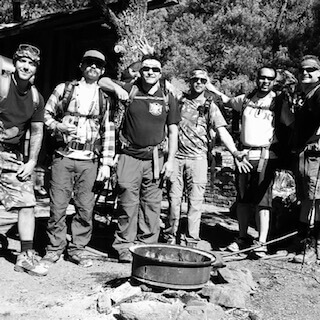
Good times gentleman 
The Castle 
Valley Views 
Panamint Hilton 
Inside the Hilton, your suite is ready 
One of many mines 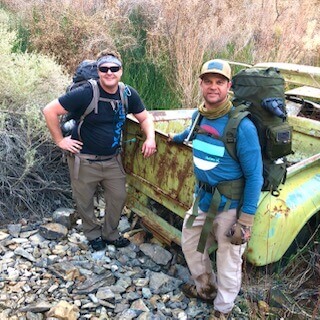
Always tip your Uber driver 
Spa day 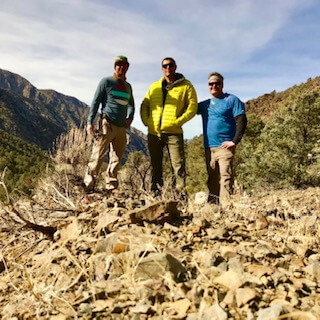
The boys 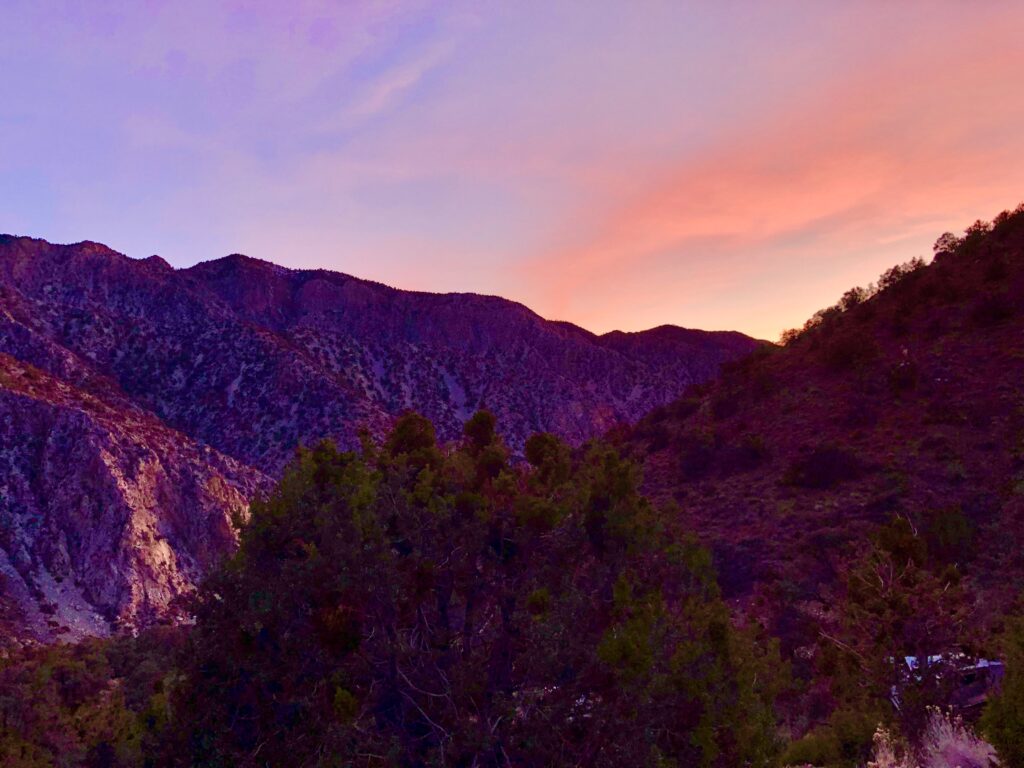
Epic sunset views




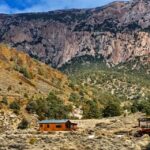
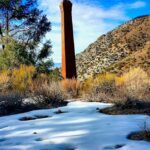
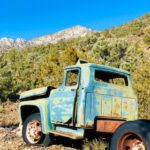

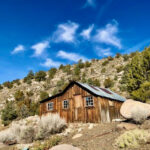
Shawn
Do you recall what the night time low was for your April trip?